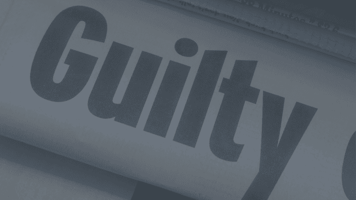Why Guidance is Missing from FCPA Investigations



The Economist, in its May 9 article, “The anti-bribery business”, takes to task both the US Department of Justice (DOJ) and “FCPA Inc.” The DOJ is criticized for taking things too far without public trials that can provide companies with precedents and case law to help shape future actions, and “FCPA Inc.”, (which we’ve explained in detail, here) the anti-bribery litigation and remediation industry that has grown out of increased DOJ pursuits of new corruption cases, is being criticized for needlessly and expensively perpetuating the frenzy.
The Economist points to expensive and time-consuming cases like Wal-Mart and Alstom as examples of how “the war on commercial bribery is being waged with excessive vigor, forcing companies to be overcautious in protecting themselves.”
Except now, some of those under investigation are starting to push back. Because FCPA investigations are the “gift that keeps giving” in costs for independent compliance monitors, lost business from mandatory exclusions from certain types of business, higher costs of capital, and shareholder lawsuits, companies are not as eager to settle for non-prosecution or deferred prosecution agreements.
While the DOJ has indicated that internal investigations are sometimes needlessly broad and costly and delay the government’s ability to resolve, the reality is that the DOJ has provided little guidance to companies, and preventive actions have largely centered on training and monitoring for contact with politically exposed persons. This ambiguity has contributed to high costs for those under investigation, deferred prosecution agreements, and non-prosecution agreements. It isn’t the DOJ’s responsibility to tell companies how to avoid committing bribery and corruption, but you can bet with all this ambiguity “FCPA Inc.” isn’t complaining.
If the DOJ is truly interested in reducing bribery and corruption, it would be well-served to follow the lead of the Public Company Accounting Oversight Board (PCAOB) who acted relatively quickly to provide public companies and accounting firms with guidance following the formation of the PCAOB as part of the Sarbanes-Oxley Act of 2002. Immediately following passage, there was a lot of confusion regarding the requirements of Section 404, in particular, regarding the assessment of internal control. The PCAOB provided initial guidance to public accounting firms in the form of Audit Standard No. 2 in 2004, followed by an updated and evolved Audit Standard No. 5 in 2007, and interpretive guidance from the Securities and Exchange Commission (SEC) in 2007.
There are options for companies seeking to proactively combat bribery and corruption in their organizations. In addition to training, companies can create a culture where employees know that all transactions will be monitored automatically for policy compliance. This helps companies communicate with employees who might unknowingly do something that is a violation so that the action can be addressed, and it helps the company prove to the DOJ they are proactively taking steps to identify potential bribery and corruption.
Our Insights On Demand for FCPA/Anti-bribery & Corruption solution monitors 100% of T&E and/or accounts payable transactions to identify behaviors indicative of fraud risk. This solution takes into account the corruption risk for the country in which the transaction has occurred, the participants in the transactions (merchant, guest, employee) and looks for anomalous behavior based on what is “normal” in the organization for that country, that employee, that merchant, all employees in the same role, all employees regardless of role, etc.
Since a solution like this can be implemented and operated for an annual cost of pennies on the dollar (as compared to non-prosecution agreements, deferred prosecution agreements, and investigations) this route seems like a no-brainer. However, many remain largely unaware of this option, which is why I believe it will take some guidance, either from the DOJ or “FCPA Inc.”
Oversight is the leader in AI-powered spend monitoring and control. Our platform helps finance teams find risk, eliminate noise, automate resolution, and improve audit outcomes. From duplicate payments to policy violations and fraud, Oversight continuously analyzes 100% of transactions to surface what matters most -so your team can reduce waste, enforce compliance, and protect the bottom line with less manual effort.


